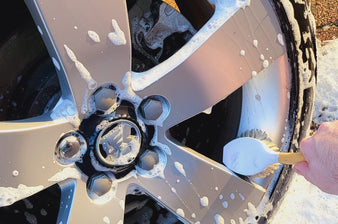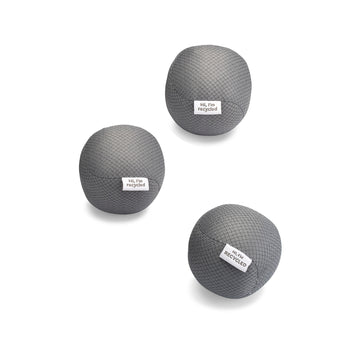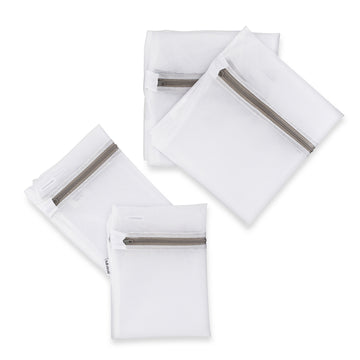From Fast to Circular Fashion
If green is the new black, then the fashion industry needs a makeover. Between significant water and chemical use, pollution, and abhorrent amounts of waste, fast fashion has quickly degraded our environment. Fortunately, we can help to reduce this impact.
In addition to using laundry tips that help to lengthen the lifespan of our favorite garments, we can incorporate elements of a circular economy—which involves sharing, reusing, repairing, refurbishing, and recycling—into our wardrobes. Let’s take a look at how fast fashion is quickly damaging our planet, and how we can use circular fashion for more sustainable style.
Issues with Fast Fashion
Over recent years, consumers have become more aware of the impact of shopping sprees and BOGO sales. We’re buying more clothes than ever before and fashion production has more than doubled since the 2000s. While this is bad enough on its own, we’re not even wearing clothes like we used to, and 20% of our clothing is never even worn! One of the key elements of fast fashion—cheap prices—makes both impulse buying and easy discarding much easier.
Not only does this mean that more than 53 million metric tons of clothes end up in landfills or incinerators every year, but it also requires a significant amount of resources to make them in the first place. Between intensive water, chemical, and energy requirements, there’s nothing green about those green high-performance leggings you just purchased. And this doesn’t even consider the impact of chemicals on garment workers or the dangerous impact of microplastics…
In addition to all of this, the fashion industry is responsible for a whopping 10% of global greenhouse gas emissions. Unless we dress for planetary success, increased demand and production are going to make this impact even worse in years to come.
Fortunately, there is a solution that is a great look for everyone: circular fashion.
What is Circular Fashion?
For most of the products that we bring into our lives, we do so on a “take-make-waste” basis. We buy a t-shirt, wear it a handful of times, and then either throw it away or send it to a local donation center (where it may go directly to landfill anyway).
A circular economy, which is what circular fashion is based on, does away with this linear model. It instead considers the value of the resources that go into each product and puts more steps in place to minimize waste and pollution, keep products and their materials in use, and regenerate natural systems.
So, from a fashion standpoint, circular fashion considers the entire lifecycle of a piece—not just how it will fit into one of the 52 microseasons that’s common in fast fashion. For a circular fashion garment, steps are taken to ensure responsible production, longevity, and a delayed end-of-life trip to the landfill. Simply put, waste and pollution don’t make it to the runway. Here’s what that looks as clothes move through a circular system:
- Using just a single raw material, or multiple raw materials that can be easily separated and recycled later on (design with circularity in mind)
- Garments designed and produced in a way that makes repairs and recycling easier, and limits pollution (produce sustainably)
- Garments kept in use as long as possible through recycling, rent, reuse, repair, redesign, and resell schemes (keep in use longer)
- An end-of-life stage that captures at least some materials for reuse (recycle easily back into raw inputs), or disposes them with no harm to the environment (return waste to nature easily, quickly, and safely)
How to Dress With Circular Style
While it’s become a trendy buzzword, you don’t necessarily need to do anything to make your wardrobe more circular. Why? Because wearing what you already own is the best way to dress for our planet! You can also consider each element of circular fashion when you decide how to fill your wardrobe:
Where to Buy and Sell Clothes
It’s never been easier to buy and sell secondhand clothes. The options are endless—and they can be fun, or even make you a little bit of money. Here are a few ideas:
- Host a clothing swap with friends or family.
- Donate to your local Goodwill, Volunteers of America, or Salvation Army. Many homeless shelters, adult rehabilitation centers, and churches will accept clothing donations, too. Some will even pick items up from your house!
- Buying and selling secondhand clothes is easy and can be done from the comfort of home—thanks to websites like Poshmark, thredUP, Swap, Depop, and eBay.
How to Properly Care for Clothes
As one of the key elements of circular fashion, it’s important to keep the clothes we currently have in circulation longer. And the good news is that this has never been easier! Now, most detergents are suitable for cold water washing, which is better for our planet and helps to lengthen the lifespan of your clothes. Use a couple of wash bags in each load and you’ll prevent unnecessary wear and tear even more.
The dryer not only requires a lot of electricity, but the heat also warps elastic, leads to shrinkage, and can have a very rough tumbling action that can lead to excessive pilling and threads that start to come undone. Because air drying isn’t an option for all of us—especially in winter!—dryer balls are a must-have. They’ll do away with potentially toxic dryer sheets and reduce the amount of time needed in the dryer, therefore reducing wear on clothing and our planet.
Circular fashion is a good look on you, and thanks to a few simple practices we can all take part in this sustainable style trend.






